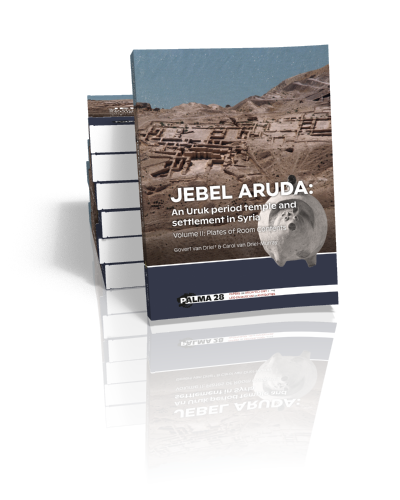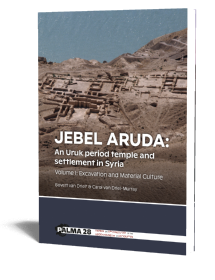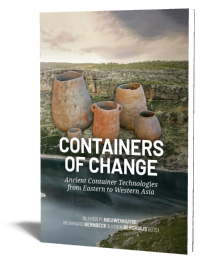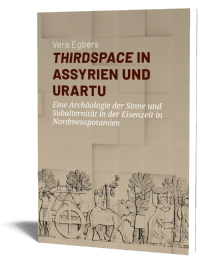Abstract:
Jebel Aruda, a prominent mountain ridge overlooking the Tabqa Dam lake in northern Syria, was the location of a remarkable settlement that flourished between c. 3300 and 3100 BC during the so-called Uruk period. For the inhabitants the sacredness of this high place, evidenced by the discovery of a large temple complex, seems to have taken precedent over its impractical location far above the valley of the Euphrates River. The site was destroyed under unknown circumstances, leaving behind the spectacular remains of a well preserved temple complex and numerous houses filled with a rich collection of material culture and administrative tools such as bullae and tablets.
A Dutch team excavated the site between 1972 and 1982 while the Tabqa Dam was under construction. These two volumes present the results of these excavations and subsequent research of the remains, with special emphasis on the relationship between the domestic architecture and the finds.
These richly illustrated volumes aim to facilitate further research and analysis of an exceptional, short-lived Uruk period settlement, comprising domestic architecture associated with a monumental temple complex. It is intended to appeal to readers interested in Mesopotamia and ancient Syria, as well as archaeologists concerned with architectural and locational analysis in a broader perspective.
Volume I presents the results of the excavation. In Volume II the contents of each individual house are listed and illustrated as discrete room assemblages, with the specific intention of making the evidence available for more detailed analysis of the relationship between material culture and architecture and to stimulate further research into aspects such as identity and the social structure of the settlement surrounding the temples.
Volume I is available here.
Contents
VOLUME II: PLATES
Introduction
Abbreviations
Concordance I: Room Numbers
Concordance II: Registered Find Numbers
Concordance III: Registered Sample Numbers
Illustrations of artefacts from each room context by House Plates 1-206

Dr.
Govert van Driel
Govert van Driel (1937-2002) was lecturer in Mesopotamian History and Archaeology at the University of Leiden, and participated in several excavations in Turkey and Syria before continuing the excavations on Jebel Aruda. His main research interest lay in the social and economic history of Mesopotamia, in particular of the Neo-Babylonian period, as documented in contemporary archives. He contributed regularly to the Bulletin of the Sumerian Agriculture Group with articles on agriculture, irrigation and husbandry that combined written sources with archaeological evidence. His study of Mesopotamian prebends, taxation and land use ‘Elusive Silver: in search of a role for a market in an agrarian environment’ was published posthumously in 2002.
read more

Dr.
Carol van Driel-Murray
Carol van Driel-Murray (1950) obtained her PhD in 1987 at the University of Amsterdam on the subject of Roman Leatherwork. She taught the Archaeology of the Roman Provinces at University of Amsterdam till 2012, and at the Faculty of Archaeology at Leiden University till her retirement in 2015. She has published extensively on Roman military leatherwork, Roman and medieval footwear. Her research interests include gender in material culture, military communities and military equipment. She participated in various excavations in Syria, and has been involved with the Jebel Aruda campaigns and publication from its inception.
read more











